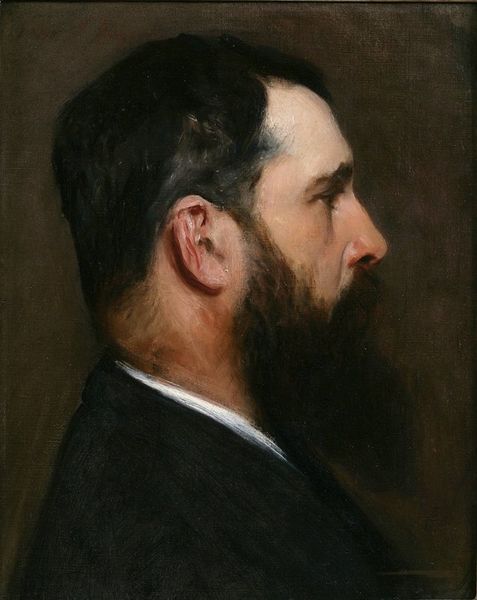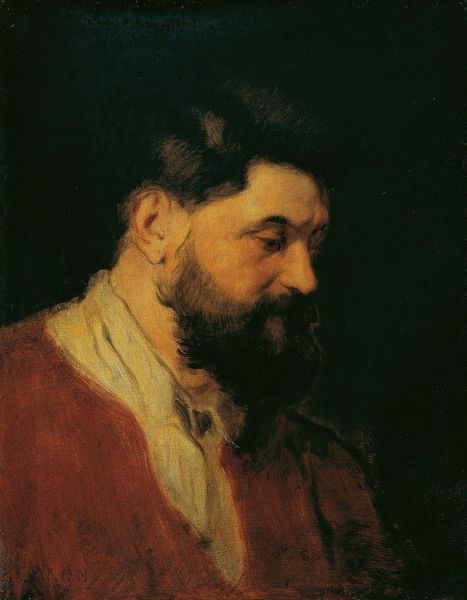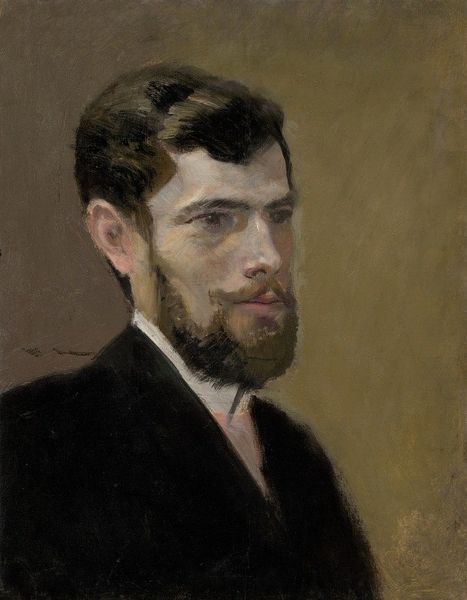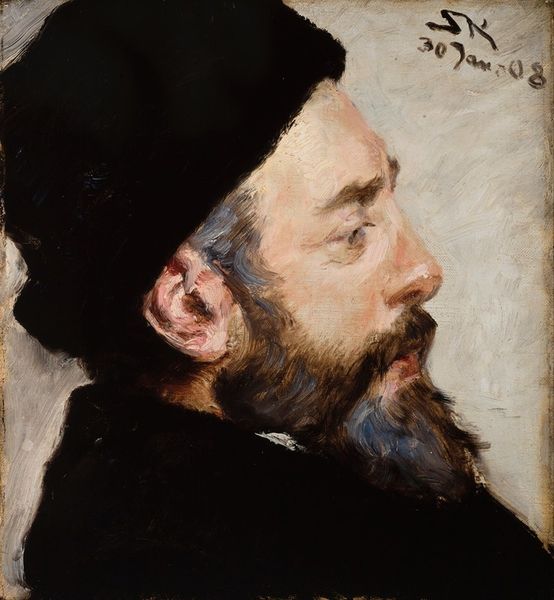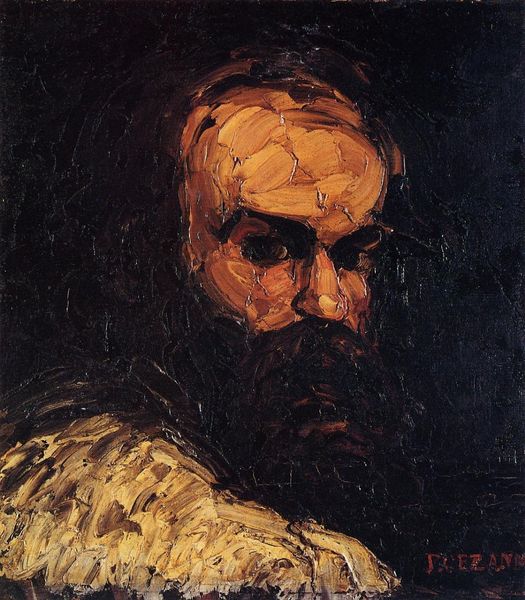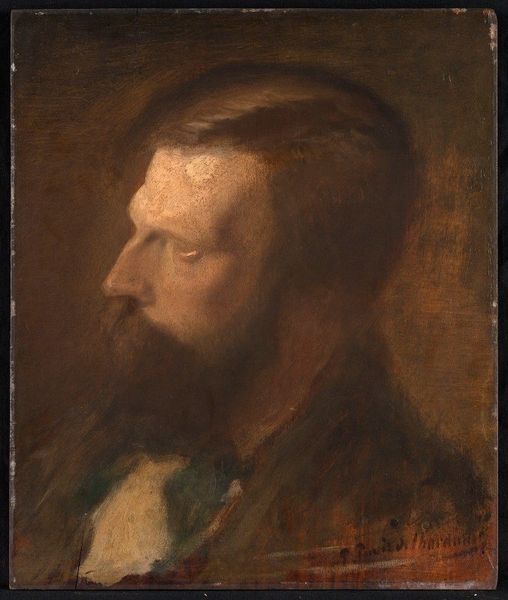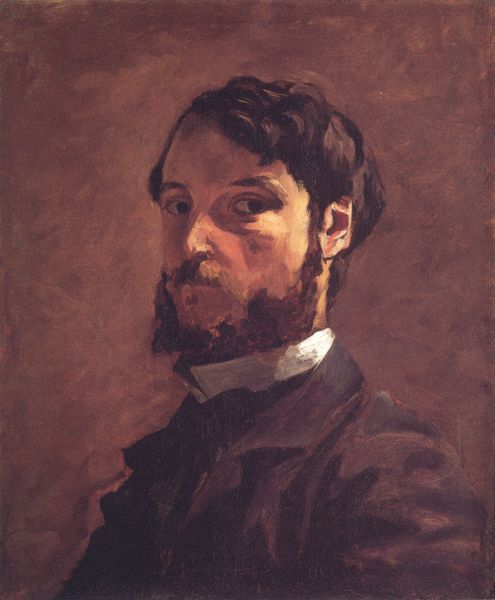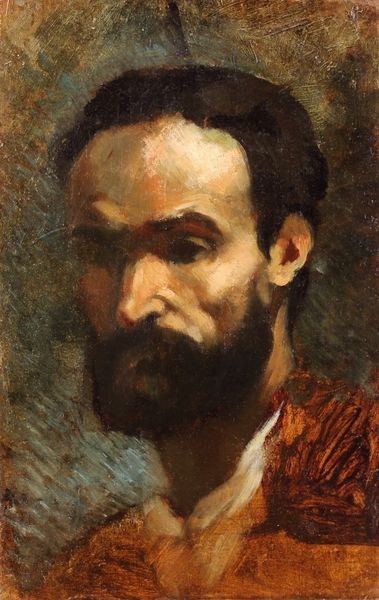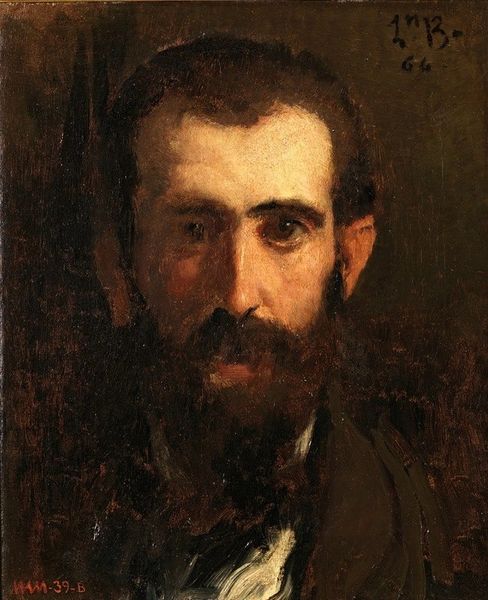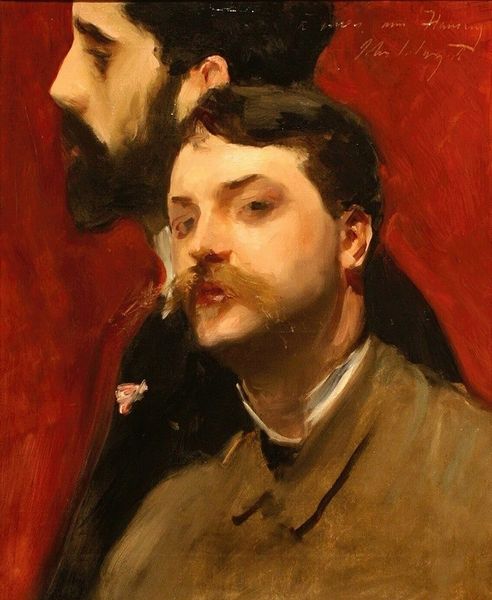
Copyright: Public domain
Editor: This is "Portrait of László Paál," an oil painting by Mihály Munkácsy, created in 1877. It has such a subdued and introspective mood. What cultural or symbolic echoes do you see in this portrait? Curator: Notice how the dark background throws the figure’s face and beard into high relief. Think about the visual language Munkácsy employs. What feelings does this evoke for you, and how do those feelings connect to the artistic conventions of the time? Do you think this shadowed effect signifies something about Paál’s identity or even Munkácsy’s own artistic concerns? Editor: The heavy shadows do lend the painting a very serious air, perhaps even a sense of the subject being weighed down by something. I’m also wondering, is this a commentary on Hungarian identity, considering Paál’s legacy as a landscape painter who captured Hungarian scenery? Curator: Precisely. Landscape painting itself was imbued with symbolism in that era. Representing the land often meant representing the people and their cultural memory tied to that place. Considering Paál’s chosen subject, and Munkácsy's portrait, we see the embodiment of the Hungarian spirit in art during a time of significant national and artistic self-discovery. Editor: So the portrait then almost acts as a symbol *for* Hungarian art and identity? Curator: Precisely. Think of the Romantic era’s interest in the individual, especially in relation to nature and nationhood. That contextual background gives so much significance to an artist's portrait. Editor: This conversation has completely transformed how I see this artwork! It's so much richer knowing about these historical and cultural ties. Curator: Indeed. The dialogue between an image and its context reveals layers of meaning.
Comments
No comments
Be the first to comment and join the conversation on the ultimate creative platform.
